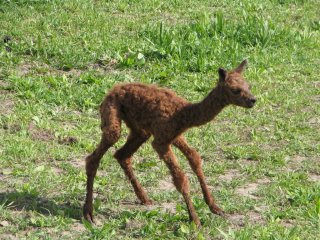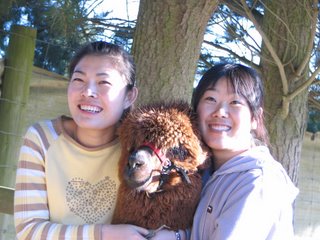
At work:
ADE injections for all cria. In winter the sunlight can be a little weak for alpacas so sometimes Vitamin D production is inadequate leading to poor bone growth and conformational defects ( legs bow in etc.). So to be on the safe side we give them injections of Vitamin D, A and E.
The boss also did a first look over of the cria (baby alpacas) from this season. There are many factors to consider when evaluating cria:-
Body conformation. Do they have good teeth, no kinks in the tail, no “fused” ears? Do they stand well? Are they in proportion?
Fibre: Is it the right colour for you? Is the crimp (the wave in the fibre) what you are after? How is the thickness of the fibre? It’s lustre? It’s estimated shear weight? Are there a lot of guard hair (primary follicles)? Are the positive characteristics consistent and persistent up the neck and down the tail and legs?
At home:
Feed-out. In winter it’s a sad fact that money will have to be spent on extra feed for your alpacas. The greater the stocking rate, the more feed you will need.
Today: a bale and a half of meadow hay to the main herd in their feed and in the barn. A bale of lucerne (higher protein feed) to the llamas and the feed-up herd ( the skinny girls). Soon I’ll have to think about weaning some of the larger crias off their mothers.
Eggs:
Chickens: 9 - 4 from the older girls and a disappointing 5 from the Orpingtons.
Ducks: 2 plus a yolk sitting there in the middle of nowhere.
A sunny day today - the kind of day when you love being a farmer. Let’s have some more of these :-)










